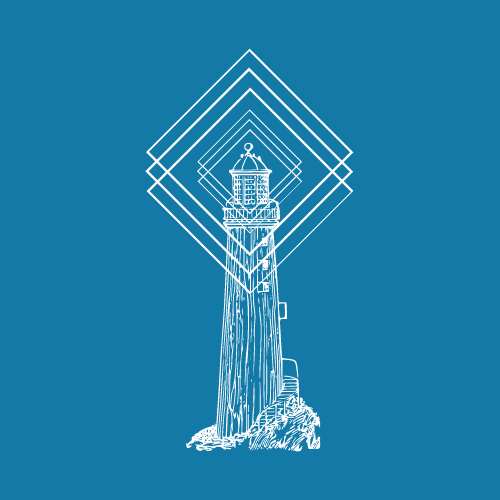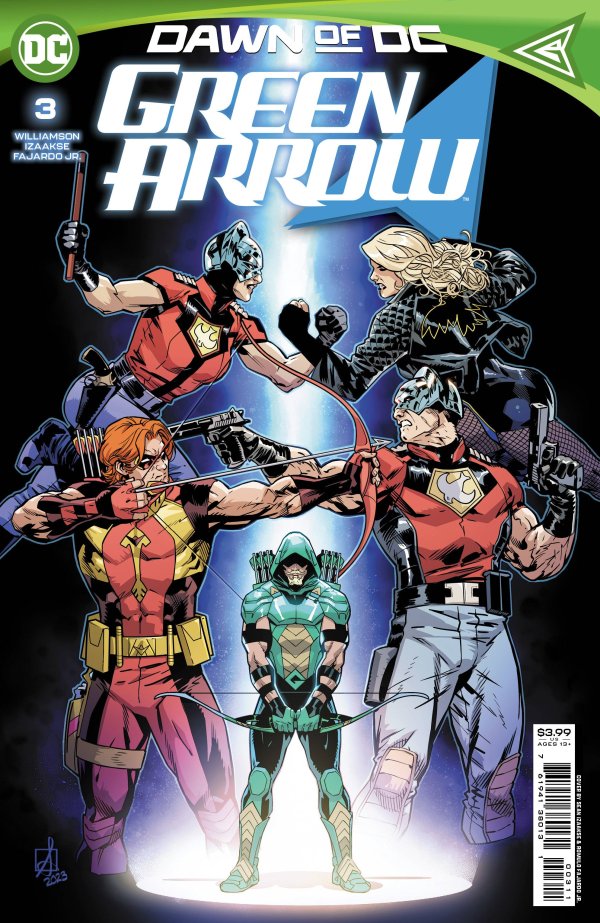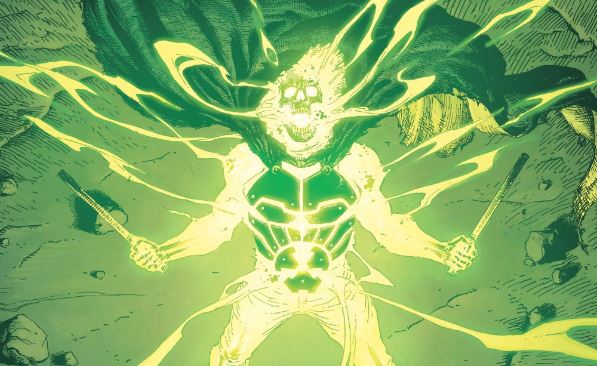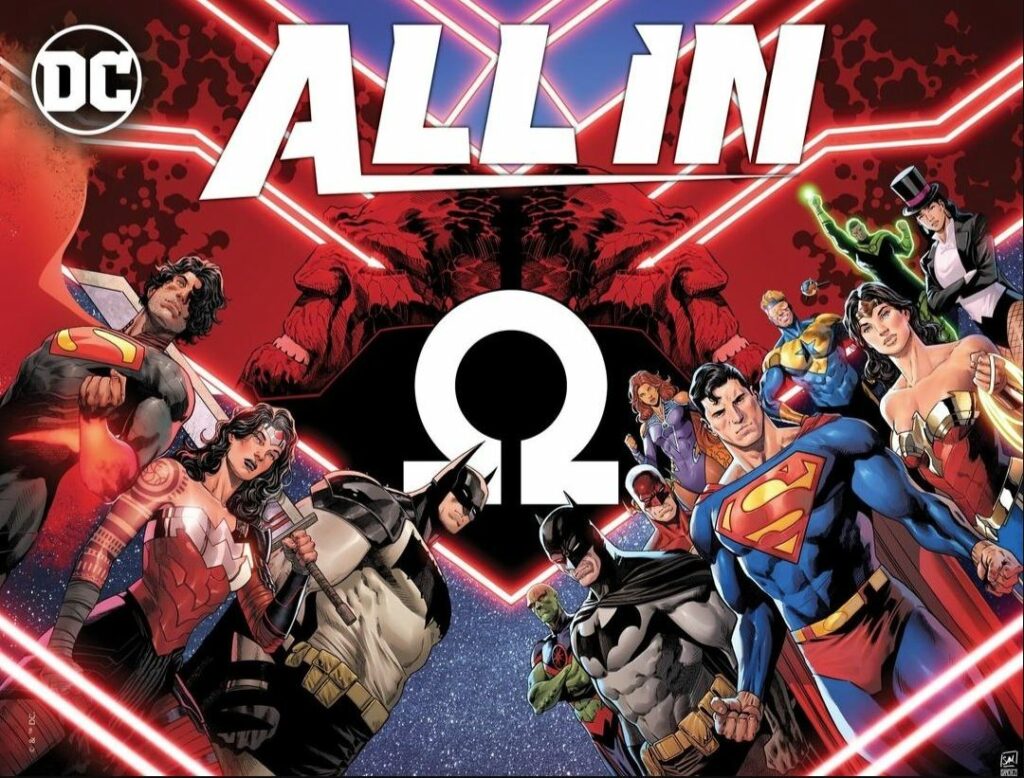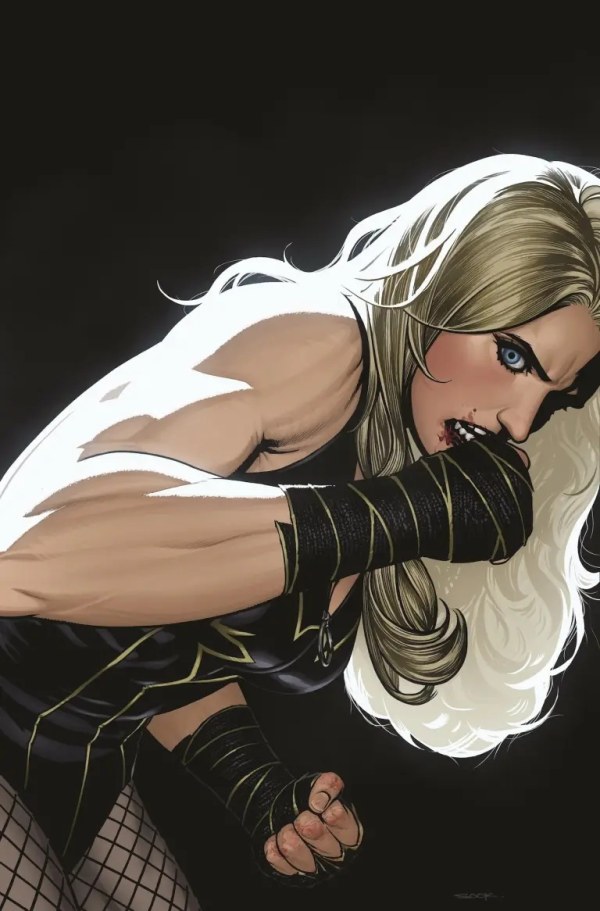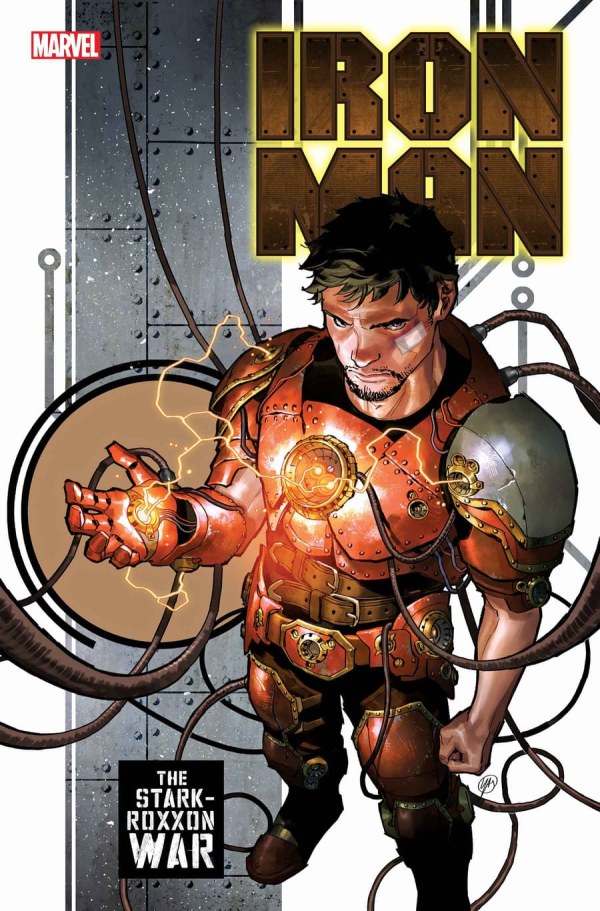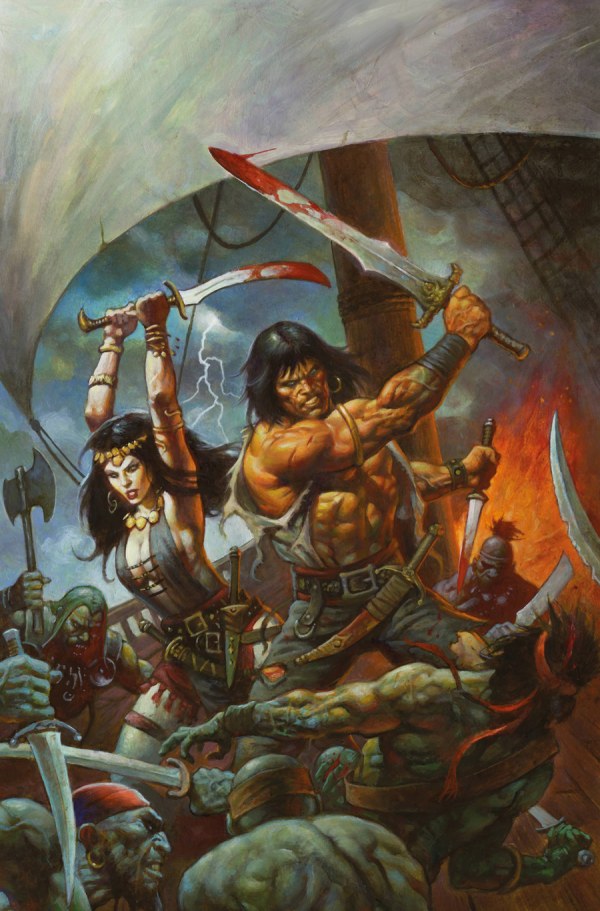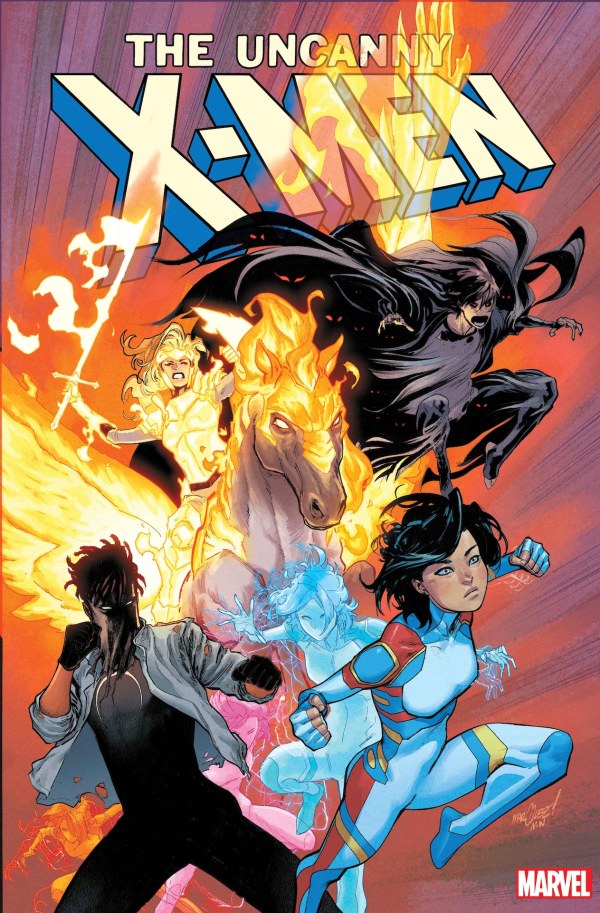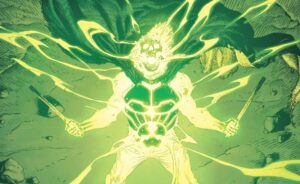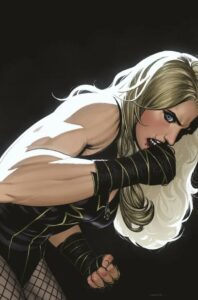For some time now, the creative direction of Oliver Queen and his supporting cast has been in flux. Green Arrow #3, by Joshua Williamson and Sean Izaakse, sets out to change that by delivering a series that long time fans have been waiting for.
Historically speaking, Green Arrow’s corner of the DCU has centred on stories of complicated family relationships, with characters like Roy Harper (originally Speedy, sidekick to Green Arrow) graduating to fully-fledged member of the JLA, and even going on to have a child of his own, Lian Harper. Similarly, Oliver’s biological son Connor Hawke would also take up the mantle of Green Arrow in the early 2000s, leading stories of his own. However, with the advent of the New 52 reboot in 2011, all that was wiped away, and Green Arrow fans have spent the better part of a decade fervently chasing any signs that the Arrow-family might one day be brought back to primacy.
Since Infinite Frontier, DC has teased the return of Lian (now no longer dead, as she was pre-New 52) and Roy, who died during Heroes in Crisis. Connor Hawke has also been making re-appearances during Williamson’s Robin series, as well as various DC Pride specials, which confirmed the long-held fan theory that Connor was asexual.
And yet, despite all of that, none of them had yet confronted Oliver. None of these characters have had the opportunity to unpack all the comics continuity-based trauma that’s been visited upon them, or achieve some level of catharsis with the Green Arrow himself.
So, when Oliver rose to prominence during Dark Crisis on Infinite Earths only for Williamson to kill him off in suitably vague, cosmic ways, fans knew something was afoot.
Enter the promised one: Green Arrow: Reunion.
The first two issues of the series have grappled with the theme of reconciling the past by delivering heart-warming reunions and repaired character relationships in impressive (and efficient) ways. Readers have been treated to a markedly rare team-up between Roy, Connor and Dinah Lance (the Black Canary) since issue #1. Roy and Lian were also briefly reunited in issue #2, before she was abruptly teleported away only to find herself trapped in a strange time and place with Oliver.
Green Arrow #3 takes things one step further widening the exploration of what reunion means by introducing examinations of how time and destiny intersect with the Arrow family.
Going Back to the Future in Green Arrow #3
If Green Arrow: Reunion is a refutation of the last decade-plus of mostly solo Green Arrow stories, then Green Arrow #3 explores that theme by passing commentary on that creative/editorial desire to keep the family aspects of the title diminished. Specifically, it utilises a time-travel plotline to at once resolve textual questions concerning where certain characters have been, while also using it to comment metatextually on the publishing decision to keep the Arrow family separated.
At the core of this issue is a warning. While he’s been away from Earth, Green Arrow discovered a message from his future self, warning of a coming event called the ‘Great Disaster’. To prevent this, his future self tells him, he must remain alone:
‘None of us can ever be together. I made it so we could have a chance at happiness on our own. Just not with each other. Especially me.’
Green Arrow to his past self, Green Arrow #3
If that status quo sounds familiar, that’s because it is. Williamson is effectively recontextualising years of continuity here, couching it in a specific emotional context. It’s not that the Arrow family have been kept apart by cosmic (read: editorial) powers, it’s that Ollie’s own fear of what could happen should they reunite has kept things as they are.
This opens up a channel within the story to comment not just on the emotional impact that the dissolution of Green Arrow’s family has on them all as characters, but also on the significance it has within the relationship between fans of Ollie and the treatment of the character.
On the textual level, Green Arrow is reckoning with a warning from the future, choosing whether or not to maintain a fractured status quo in order to prevent another crisis. Metatextually, Williamson and Izaakse speak to a certain type of small-c conservatism that pervades the direction of the character. Old Man Arrow (who bears a striking resemblance to the Green Arrow of The Dark Knight Returns, another future meant to be avoided) represents a particular editorial mindset. He stands in for the idea that allowing superheroes to become too happy, to let them form families and grow and importantly age, leads to ‘great disaster’ and must be avoided at all costs – including by keeping these figures trapped in a regressive cycle of loss and isolation.
It likely comes as no surprise that an arc titled “Reunion” ultimately rejects this argument, with Green Arrow #3 being no different. What sets this issue apart though is how Williamson and Izaakse undermine this perspective repeatedly, drawing out the inherent irony of a static approach to character and continuity through their use of time.
First and foremost, in a list of examples is the setting of the issue – that being the 31st Century, as Green Arrow and Lian are met with Connor Hawke and the Legion of Super-Heroes!

Beyond any excuse to see the Legion being a great excuse, this meeting underlines one of the key reasons why Old Man Ollie’s ideas around destiny, and the real-world attitudes around the “inevitable” consequences of letting heroes mature, are nonsensical. The 31st Century is constantly changing. It’s not an accident that Old Man Ollie warns of “the” future in the same issue that the third or fourth reboot of the Legion help draw out knowledge of that very warning from Oliver. There is no such thing as “the” future, only a possible future, and the Legion are proof of that.
Add that to a Dark Knight Returns-esque Green Arrow – a future that has never come to pass in mainline continuity – being the one to deliver the message, and it’s clear that Williamson thinks this idea of inevitability, of destiny, is silly in these contexts.
Furthermore, Williamson’s use of the phrase ‘Great Disaster’ adds further layers of doubt – not about whether this event will happen, but if it already has. ‘Great Disaster’ could aptly describe any of the many Crisis-level stories DC has told in recent years: Darkseid War, Dark Nights: Death Metal, even Dark Crisis itself. The irony of rejecting family for the sake of this warning is that the disaster in question may already have come to pass, showing just how facile an insistence upon sticking to the status quo would be.
As such, reunion within the context of this story comes to mean more than just a cathartic narrative beat. It’s an ideological rejection of the non-sentimental storytelling that hung over the last decade-plus of DC Comics, and the industry at large. Reunion is about denying a presumed inevitability that the future of a character, in universe and outside of it, is dependent on their circling the same essential narrative forever.
How Green Arrow #3 Breaks Time to Make Time
In rejecting a doomed future, one naturally looks next to the past for guidance. If the Legion and Old Man Ollie are used to demonstrate the ramifications that fearing change can have on stories (both personal and fictional), then Lian’s storyline demonstrates the possibility bound up in facing into that fear, not with conservatism but with openness.

Midway through the issue Lian reveals to Oliver that, though she was meant to have died, she actually awoke to Amanda Waller and a shadowy figure debating some kind of deal, before teleporting across the planet (and across time). Every time she tried to have some kind of reunion with her father, Roy, unseen forces would whisk her away, explaining why it’s taken so long for everyone to come back together.
Some might argue that Williamson and Izaakse accomplish one of the better retcons in recent years, as it only expands on what’s come before, rather than taking anything away. I would argue, however, that part of its success is that it doesn’t even read as a retcon at all. It’s not stamping its creative authority over past stories and asserting that what you previously read never happened, or never happened that way. It’s not changing anything; it’s just revealing extra details readers have never seen before.
The throughline of this moment’s success is that, rather than focus on the minutiae of continuity here, the emphasis is instead placed on Lian’s emotional state of mind. It’s less about how she was secretly there the whole time – off-panel in Red Hood and the Outlaws, for example – and more about how this young girl had to watch on, helpless, as her father journeyed around the DCU completely unaware of her existence.
This feeling is underscored by how closely Lian’s experience is rendered to mirror that of fans – both are confused about what’s been happening, and why fate is seemingly conspiring to keep all the people/characters they care about isolated. In this way, Lian doubles as an audience insert, providing equal parts accessibility and wish-fulfilment.
Lian has no fear of the future, only a fear that there won’t be one if her family can’t be reunited. The idea that she must be kept separate, that the Arrow family in DC Comics must be kept lean and bereft of any markers of aging, leads to the eventual dissolution of hope. If Lian stands in for the desires of longtime Green Arrow fans for satisfaction, then her hopelessness serves as a commentary on the apathy caused by a continued insistence on rejecting the family element at the core of the title.
This criticism is furthered by the temporal movements of the plot. Resistance to the reunion is characterised as outdated, as personified in Old Man Arrow; here, that implication is compounded. By separating Lian from the Arrow family narrative, she is literally stuck in the past, forced to watch her family (or, fan favourite characters) seemingly regress to younger versions of themselves, repeating old story beats. Only when she’s reunited with Roy, with Oliver, does it feel like the cycle has broken, and she’s finally come home. This is emphasised by the final panel of the page, which calls back to her reunion with Roy earlier in the series. Here, amongst a sea of cold blues and bruised purples, does some light finally enter back onto the page, surrounding her and her father.
Revisiting the past, not to live within it but to recognise its patterns and build something new out of it, underpins the core thesis of the issue – perhaps even the series as a whole.
The thing worth being afraid of, Williamson and Izaakse argue, is not what could happen if these heroes age before the reader’s eyes. It’s what will happen if they’re not allowed to grow, if new archers aren’t able to take up the bow.
After all, why else would Green Arrow #3 end with the emergence not of a new villain, but the return of an old one? Arriving as the perfect manifestation of fear for this story is Parallax: a threat born of the past, stuck on the past, unable to move on and become what he’s next meant to be.
The Triumph of Green Arrow #3
What’s truly remarkable about this series is that it could so easily fall into the trap of becoming another one of the many comics to churn out a rote alt-history lesson, designed to perform housekeeping on rogue strands of ill-conceived continuity. Yet instead, is strips away all the needless complexity and hones in on the very thing that pulls you into continuity in the first place – character – and never let’s go.
This issue is not a grand story about a teenager being rubber-banded throughout the timeline; it’s a close, emotional account of a young girl ripped from her family, fighting desperately against the whims of the universe to find her way back to them.
It feels like Williamson is offering a measured counterbalance to Dark Crisis, responding to the scale and breadth of his previous work and reminding audiences why stories like that matter – because they’re built to with stories like this.
It also couldn’t be possible without an artist like Izaakse. Special attention is paid on every panel not just to compose things in a beautiful structure, making the most of a cross-time caper starring the world’s best set of archers, but to the characters. Williamson only provides a consistent view into the interiority of Ollie, as this series is narrated almost entirely by him. That leaves the audience at a relative distance to characters like Dinah and Roy, whose escapades are framed either from Ollie’s perspective, or one more omniscient (although Lian does break that pattern this issue, but it is an exception to the rule). And yet, Izaakse is able to close that distance, bringing you into the emotional reality of the characters with ease.
His ability to render personality and “acting” in a character reminds me of Kevin Maguire’s. While his depictions of facial expressions may not be as exaggerated, given this is not a comedy like Giffen and Maguire’s Justice League International was, they are similarly accomplished. Whether it’s the cockiness of Peacemaker’s grin, or the juxtaposed looks of intensity and uncertainty from Ollie and Connor as they meet again for the first time, that really elevates those emotional moments. The embrace between father and son at the start of the issue immediately conjured all the warmth and bittersweet catharsis that I felt back in 2016 when Wally West and Barry Allen finally reunited in DC Rebirth, for example.
Green Arrow #3 succeeds because it adds to continuity through character, not character through continuity. It treats the emotional core of the story with respect and significance, using the time-hopping narrative framework as a device to create literal loops in the story in order to start closing the emotional loops fans have been left in for years.
